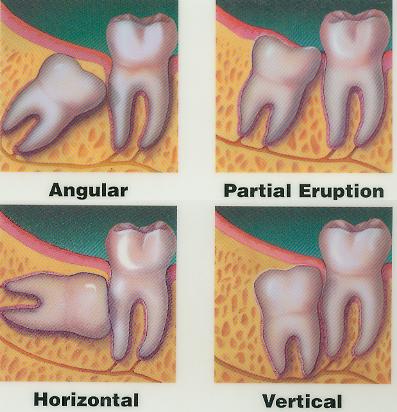
Dismpection of Wisdom Molars:
The oral cavity often harnesses teeth which, due to certain developmental difficulties, do not erupt in their right place. They often remain dormant inside the bone. However, when they pose a problem due to the forces they exert or when they become foci of infection, their removal is their only cure. The most common impactions are seen in cases of wisdom teeth (third molars). Sometimes, even canines or other teeth might be found impacted in one’s mouth.
Each individual wisdom tooth is unique and depending on how it grows, it can have different impact on bones and/or tissues. Their varied developments may affect other teeth and cause troubles. When they need to be removed, experts from Shah Dental Clinic are the ones who can easily help you.
If the impaction is between the third molar and part of the second molar, this kind is called bone impaction. It can subcategorize into vertical, horizontal, and angular depending on the way they are intersecting. If the wisdom tooth is directly breaking out of the tissue, it is known as tissue impaction.
The following four impactions are commonly found in patients:
Bone Impaction (Vertical) :
Impaction would cause pathosis inside the cheek bone or jaw bone.
Bone Impaction (Horizontal) :
Besides leading pathosis, horizontal placement would hurt the hard tissue of the second molar to cause toothache and cavities.
Bone Impaction (Angular):
Besides leading pathosis, angular placement would hurt the hard tissue of the second molar to cause toothache and cavities.
Tissue Impaction:
The wisdom tooth almost erupts out of gum, or its half erupts out of gum to cause pseudo-pocket. Besides leading pathosis, it easily tracts food debris and causes gum irritation.

